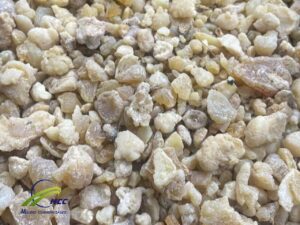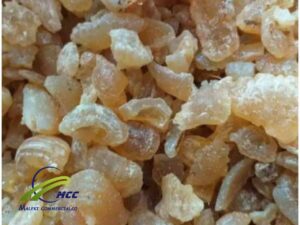Wholesaler, and Exporter 100% pure Asafoetida gum (Hing)
With a decade of experience in cultivation, production, processing, packaging, and export, Maleki Commercial is one of the largest pioneers in the production, supply, and export of this unique and exclusive plant species worldwide. For bulk purchases of organic and pure Asafoetida gum (Hing), please do not hesitate to contact us.
During the harvest season, the company employs trained workers, under the supervision of medicinal plant experts, to harvest this rare species without damaging the plant. After harvesting and collecting from high altitudes, the gum is transferred to storage facilities. The packaging and storage methods comply with global standards.
This company is capable of supplying over 1000 tons annually of various types of this unique plant’s gum, including both bitter and sweet varieties. Our decade-long experience in exporting to India, China, the United Arab Emirates, and Malaysia highlights the quality of our products and the satisfaction of our customers.
Botanical Characteristics
Asafoetida gum (Hing) is native to dry and semi-dry regions, including Iran, Afghanistan, and neighboring areas. The name “asafoetida” is derived from the Persian word “Anguz,” meaning “bitter resin,” referring to the plant’s strong odor and bitter taste.
Asafoetida gum (Hing) is a perennial, large plant that can grow up to 2 m in height. Its stems are thick, hollow, and covered with large, compound leaves. The leaves of this plant have deep incisions and resemble celery leaves.
Roots
The roots of Asafoetida gum (Hing) are thick, and fleshy, and penetrate deep into the soil. These roots are the most commercially valuable part of the plant as they yield the resinous sap.
Flowers
Asafoetida produces yellow, umbrella-shaped flowers at the top of its stems. The plant grows wild in dry plains and can be found in mountainous areas with dry and semi-dry climates.
Asafoetida Gum (Hing)
Gum: The resinous sap of the Asafoetida plant, commonly referred to as “gum” or “resin,”. This substance is extracted from the roots and, is used as a medicinal and aromatic substance after purification. Initially, the sap is white and sticky, but it turns brown or red after exposure to air.
Due to its medicinal properties and therapeutic applications, Asafoetida gum (Hing) has been used in traditional medicine in Iran and other Middle Eastern countries to treat various diseases.
Medicinal and Therapeutic Properties Asafoetida gum (Hing)
The sap of this plant contains compounds with antibacterial, antiviral, anti-inflammatory, and antispasmodic properties.
Antibacterial and Antiviral Properties
Asafoetida gum (Hing) is renowned for its potent antibacterial properties, making it an effective tool against bacterial infections. Moreover, research suggests that the plant’s compounds may possess antiviral effects, potentially inhibiting the spread of viruses such as those that cause the common cold.
Antispasmodic and Carminative Effects
Asafoetida gum (Hing) has long been used to treat digestive issues such as bloating, indigestion, and muscle cramps. The plant helps improve digestive system function by reducing intestinal muscle spasms.
Pain Relief and Anti-inflammatory Effects
Asafoetida gum (Hing) is known for its anti-inflammatory properties, making it a potential aid in reducing muscle and joint pain associated with inflammation. It’s also used by some to alleviate migraine headaches.
Immune System Booster
The compounds found in this plant can strengthen the immune system and help prevent various diseases. In addition to its medicinal properties, Asafoetida gum (Hing) is also used as a culinary spice.
Asafoetida gum (Hing) in the Food Industry
In Indian cuisine, Asafoetida gum (Hing) is used as a flavoring agent in various dishes. Due to its pungent smell and strong taste, it serves as a substitute for garlic and onion in vegetarian dishes.
Asafoetida gum (Hing) is widely used as a spice in the food industry. Due to its strong odor and taste, it acts as a flavoring agent in vegetarian foods, pickles, and condiments. Additionally, this plant serves as a natural preservative in certain food products.
Its antibacterial and antifungal properties contribute to extending the shelf life of foods. Moreover, it is used in the production of some dairy and meat products to enhance their flavor and preservation.
Asafoetida gum (Hing) Processing Methods
The Asafoetida gum (Hing) processing primarily involves extracting the plant’s sap and converting it into usable products for the pharmaceutical and food industries. This process includes the following steps:
Sap Extraction
Asafoetida gum (Hing) sap is extracted by cutting the plant’s root during the spring or early summer. The sap then gradually seeps from the root and dries on the plant’s surface, changing color from an initial white to a brown hue.
Purification and Processing
The extracted resin must undergo purification to remove impurities and unwanted substances. This process typically involves separating root fragments and other undesirable particles. Once cleaned, the resin is packaged in solid or semi-solid form.
Processed Products
Depending on the intended use, Asafoetida gum (Hing) resin is processed into powder, tablets, or capsules. In the food industry, the resin is used as a flavoring agent and sold in small packages.
Cultivation Methods
Asafoetida gum (Hing) is native to arid regions and requires specific climatic conditions to grow. It thrives in well-drained, light soils and cannot tolerate humid or rainy areas. For successful cultivation, the following conditions should be met:
Soil
Asafoetida gum (Hing) requires sandy or loamy soils with good drainage. It does not grow well in heavy clay soils, as its roots need ample space to penetrate deep into the soil.
Climate
This plant is adapted to dry and semi-arid conditions and performs best in areas with low rainfall and hot, dry summers. It grows optimally at temperatures above 25°C and elevations higher than 1000 m above sea level.
Irrigation
This plant does not require regular irrigation. As it naturally grows in dry regions, watering should only be done when the soil becomes excessively dry.
Plant Care
Once seeds are planted, Asafoetida gum (Hing) requires minimal care. The primary concern is preventing the growth of weeds around the plant, which can inhibit its growth.
Challenges and Issues
Despite the thriving trade in Asafoetida gum (Hing), the industry faces several challenges. One of the main issues is the destruction of natural habitats due to overgrazing and improper use of natural resources.
Additionally, biodiversity loss and climate change pose threats to the natural growth of this plant. To preserve and develop Asafoetida gum (Hing) cultivation, the following steps can be effective:
Industrial Cultivation Expansion
Expanding controlled and planned cultivation in dry regions can increase the production of this valuable plant.
Conservation of Natural Resources
Implementing conservation programs to prevent the degradation of natural habitats and proper management of rangelands can help protect asafoetida populations.
Research and Development
Scientific research aimed at improving cultivation methods, enhancing productivity, and developing new applications for Asafoetida gum (Hing) in various industries is of great importance.
Asafoetida Names in Indian Languages
In India, Asafoetida gum (Hing) is widely used in both cooking and traditional medicine, and it is known by various names in the country’s diverse languages. Below are some of the local and regional names for this plant in different Indian languages:
- Hindi: “हिंग” (Hing) is used in most parts of northern India.
- Tamil: “பெருங்காயம்” (Perungaperungayan) is used in the state of Tamil Nadu, especially in southern Indian cooking and traditional medicine.
- Telugu: “ఇంగువ” (Inguva) is used in the states of Andhra Pradesh and Telangana.
- Kannada: “ಇಂಗು” (Ingu) is similar to the Telugu and Malayalam names and is used in Karnataka.
- Marathi: “हिंग” (Hing) is used in the state of Maharashtra.
- Bengali: “হিং” (Hing) is used in West Bengal and Bangladesh.
- Gujarati: “હિંગ” (Hing) is used in the state of Gujarat, where Gujarati is commonly spoken.
- Punjabi: “ਹਿੰਗ” (Hing) is used in Punjab.
- Urdu: In India and Pakistan, where Urdu is widely spoken, the term used is “ہینگ” (Hing). This name is similar to the Hindi and Marathi terms and is commonly used throughout South Asia.
Given India’s linguistic and cultural diversity, Asafoetida gum (Hing) is known by different names depending on the region and language. However, the term “Hing” is commonly used across most regions of the country, particularly in Hindi and Marathi-speaking areas. Furthermore, this plant is an important flavoring agent in Indian cuisine and plays a significant role in the country’s rich culinary tradition.
Asafoetida Names in Other Languages
Here are the names for Asafoetida gum (Hing) in various languages:
- Arabic: حلتيت (Hiltit)
- English: Asafoetida
- French: Ase fétide
- Hindi: हींग (Hing)
- Korean: 아위 (Awi)
- Chinese: 阿魏 (Ā wèi)
- Russian: Асафетида (Asafetida)
- Japanese: アサフェティダ (Asafētida)
- Spanish: Asafétida
- Italian: Assafetida
Export Asafoetida
Iran is one of the largest producers of this plant globally, holding a significant share of the world’s production. Along with Iran, Afghanistan, Turkmenistan, and Uzbekistan are also key producers of this plant.
The export of Asafoetida gum (Hing) is primarily directed to countries such as India, the United Arab Emirates, Europe, and the United States. The demand for importing this plant is growing in international markets due to its medicinal and culinary properties.
Countries such as India, China, European nations, and the United States are major importers of this plant. India, in particular, is one of the largest importers due to its extensive use of this plant in cooking and the food industry.
Maleki Commercial is the leading exporter of various types of Asafoetida gum (Hing) resin, including Dried Bitter Asafoetida Gum (Kokh), Asafoetida gum (Hing), Dried sweet Asafoectida (Excel), granules, and powders in both bitter and sweet varieties. Our products are 100% pure, organic, and free of any additives. Wherever you are in the world, you can trust our company to deliver pure and organic asafoetida resin with guaranteed quality.
Asafoetida gum (Hing) Price List
If you require high-quality Asafoetida gum (Hing) resin at competitive prices, feel free to contact our experts via phone, WhatsApp, or email to inquire about the price list of different varieties.


